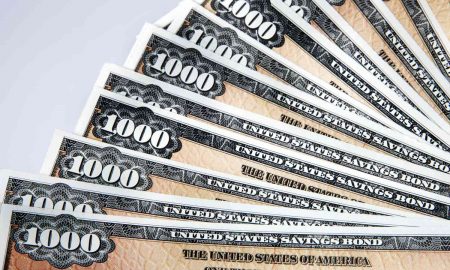
The Difference between Checking And Savings Accounts

All Banks have two types of accounts which can be used by people who are interested. One of them is known as a checking account and the other is a savings account. This article is looking at the differences between the two types of accounts to give you an understanding about the type of account you should be having.
Banks have stipulated certain criteria which their clients will have to adhere to when they choose to open either a checking or savings account. Clients who intend to have accounts these types are advised to understand these matters well if they do not want to be made liable for charges. Let us look at the differences between checking and savings accounts.
Fees Imposed On Checking and Savings Accounts
 As mentioned earlier banks have stipulated certain criteria which the account holders are required to meet. For example, when clients decide to set up a direct deposit of paychecks into the checking account the account holder must maintain a minimum balance or must be making a stipulated number of transactions every month. The account holder will be liable for charges if he or she does not meet the criterion which has been set. ATM fees, overdraft charges, overdraft protection fees in order to avoid overdraft charges and online access and bill payment charges may also be imposed by the banks. The charges applied will differ according to the bank with some banks and credit unions keeping them to a minimum.
As mentioned earlier banks have stipulated certain criteria which the account holders are required to meet. For example, when clients decide to set up a direct deposit of paychecks into the checking account the account holder must maintain a minimum balance or must be making a stipulated number of transactions every month. The account holder will be liable for charges if he or she does not meet the criterion which has been set. ATM fees, overdraft charges, overdraft protection fees in order to avoid overdraft charges and online access and bill payment charges may also be imposed by the banks. The charges applied will differ according to the bank with some banks and credit unions keeping them to a minimum.
Savings accounts on the other are free of any charges until the account holder does not exceed his or her withdrawal limits. Certain banks, however, require account holders to maintain a minimum daily balance or make a stipulated number of money transfers into the savings account every month if they intend to avoid account maintenance fees.
Interest Rates Paid On Checking and Savings Accounts
 Banks have the option of determining the interest rates which are paid on checking and savings accounts. Checking accounts typically earn little or no interest while savings accounts always have the component of interest available to them. The interest rates paid will depend on the bank, the type of savings account and the money deposited but it is always higher than the interest rate paid on checking accounts.
Banks have the option of determining the interest rates which are paid on checking and savings accounts. Checking accounts typically earn little or no interest while savings accounts always have the component of interest available to them. The interest rates paid will depend on the bank, the type of savings account and the money deposited but it is always higher than the interest rate paid on checking accounts.
Online banking institutions are paying an interest rate of 1% since May 2016 and this is a common phenomenon when compared to the brick-and-mortar traditional banks that are offering lower interest rates as compared to online banking.
The Differences between Savings and Checking Accounts
Savings Accounts. Savings accounts allow an upon quarter approximately 3-6 withdrawals a month with a restriction on the amount that can be withdrawn. Account holders are required to maintain a minimum balance and these accounts are designed for saving money without risks either for the short term on the long-term. Savings accounts earn interest but the figures vary according to the bank or credit union. When intending to use the money the account holder is initially required to transfer the balance to a checking account. No other facilities are available with savings accounts other than the option of conducting online transactions.
Checking Account. There are no withdrawal limits set upon checking accounts and the minimum balance required also varies according to the bank. The account is designed for regular use with the fees being charged being nominal or none. These accounts do not earn any interest but this is an account which can be used for everyday transactions. Access to the account is available at any time and features like overdrafts and external online connections are available.
Checking accounts are available with debit cards which allow account holders to make withdrawals at ATM machines and make payments for purchases at stores. Account holders will be able to use the balance in their accounts with the debit cards issued. Savings accounts are not available with debit cards and therefore the account holder is required to transfer the balance into a checking account before making a withdrawal.
No limitations are imposed on withdrawals or transactions on a chickens account while savings accounts have been designed for occasional usage and restrictions will be applicable.
A checking account is generally used for regular spending and purchases while a savings account as suggested by the name is a good option to save money for an extended period. The objective of the savings account is to allow the money to accrue for emergency usage or for the purchase of major items like a house or a car.
More in Bank Stories
-
Brewing Controversy: Unraveling the Bud Light Boycott
In a world fueled by opinions, the recent Bud Light boycott has stirred quite the commotion. It’s not your typical tale...
December 7, 2023 -
How LVMH Became a $500 Billion Luxury Empire
LVMH Moët Hennessy Louis Vuitton is a name synonymous with luxury and opulence. The brand has crafted not just products but...
December 2, 2023 -
Women Spend 20% More Per Year on Out-of-Pocket Health Costs
A recent report from Deloitte has brought to light a concerning issue in the world of healthcare – women spend a...
November 24, 2023 -
How Sound Baths Can Soothe Your Mind, Body and Soul
Have you ever been so caught up in a song that you felt the world melt away? Music, in its many...
November 18, 2023 -
What to Know Before Rebalancing Your Investment Portfolio
Managing an investment portfolio is akin to steering a ship through ever-changing waters. Periodic adjustments are necessary to ensure you stay...
November 11, 2023 -
Jeff Bezos and Fiancée Lauren Sánchez’s Extravagant $500 Million Superyacht
Get ready to set sail on a journey into the opulent world of Amazon founder Jeff Bezos and his fiancée Lauren...
October 31, 2023 -
How to File Your Taxes: A Comprehensive Guide
Filing your taxes can be daunting, but with the right knowledge and preparation, it doesn’t have to be overwhelming. Taxes are...
October 26, 2023 -
Make Your Kids Mini Master Chefs | Here’s How
For many of us, the kitchen is the heart of our homes – a place where magic happens, one dish at...
October 19, 2023 -
Deciphering Stock Market Sell Signals
In the fast-paced world of stock trading, understanding when to sell your investments is just as crucial as knowing when to...
October 12, 2023















You must be logged in to post a comment Login